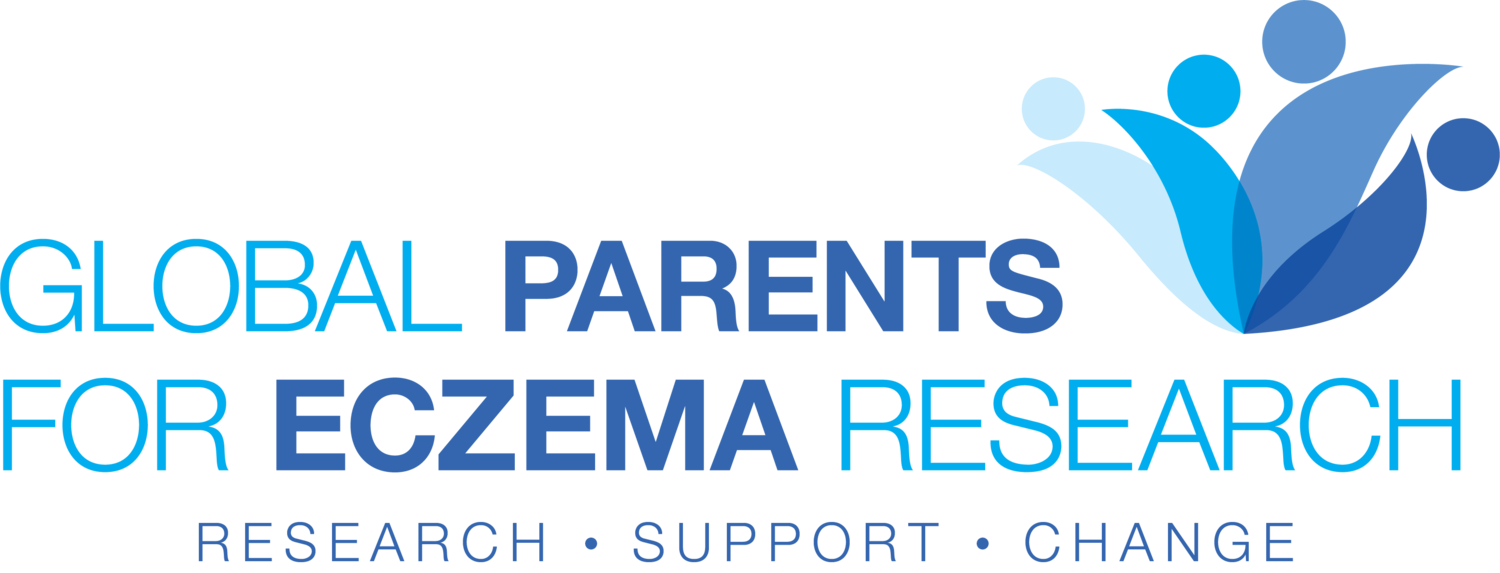Enter to Win the
Big Ideas for Eczema Research Challenge!
Have you figured out something important about eczema that could benefit other patients? We invite patients, parents and caregivers to enter your insights into the Big Ideas for Eczema Challenge! The goal is to improve the understanding of eczema and accelerate ways to prevent it. Past winners received both monetary prizes and assistance with developing ideas into pilot studies through research partnerships or funding!
(The 2024 Challenge is now closed. Stay tuned for the opening of next year’s contest in February!)
Meet the 2024 Winners of the Big Ideas Contest!
1st place, 2024
Dana Bishop, Caregiver, United Kingdom
-
Dana’s son has had eczema for his entire life and she has spent hours conducting research on how to alleviate his severe and debilitating condition. She came across Cold Atmospheric Plasma (CAP) Therapy - first utilized as a sterilization technique in the 1960s — and suspects that it has applications for eczema. CAP has antimicrobial benefits, anti-inflammatory effects, and promotes wound healing, and may reduce the symptoms of itch. Dana proposes safety and efficacy studies to formally test CAP for eczema applications.
2nd place, 2024
AJ Lumsdaine, Caregiver, USA
-
AJ’s infant suffered from severe eczema that was full-body and easily infected. In her search for the cause, she concluded that in order for a health condition to become so globally prevalent so quickly, the underlying cause had to be primarily environmental, probably mediated by a genetic predisposition. An engineer by training, AJ applied engineering methods to identify environmental culprits and eliminate them from the home. Her idea is that hydrophilic surfactant exposure is the primary cause of AD by affecting the body’s membranes and the immune system. Based on AJ’s experience, systemically removing synthetic detergents (laundry, dish, bodywashes, household surfaces, foods, etc.) from indoor environments dramatically improves eczema. She proposes a study and literature review to further this idea.
3rd place, 2024
Christine Liu, Caregiver, USA
-
After a friend recommended a traditional Chinese medicine (TCM) from Korea, Christine tried it on her infant daughter and noticed rapid and remarkable results. The key active ingredients are Thanaka, Graviola, Wolfiproia Cocos (Chinese mushroom), and Sophora Flavescens. She notes that it continues to offer consistent relief without immune suppression, a concern for parents. Considering the lack of studies that investigate the TCM ingredients’ for eczema, Christine proposes a formal study of the formulation to a) confirm its safety b) test its efficacy c) expedite its wider use.
Meet Past Years Winners
1st place, 2023
Elizabeth Shores, Parent, Florida, USA
-
Pulsed ElectroMagnetic Frequency” (PEMF) therapy is a non-invasive, painless treatment for various injuries, skin maladies, bone-related conditions and pains. PEMF has been used for decades in Europe and heavily researched. with more than 5,000 studies showing its effectiveness and safety.
I'd like to examine PEMF mat efficacy as a (complimentary) treatment specifically for eczema.
This therapy produces gentle pulses that will stimulate the cells well below the skin’s surface and begin working. This stimulation will help cells repair as well as help create newer healthy cells. The cells, nerves, tissues, muscles and joints may all benefit from each session.
2nd place, 2023
Hannah Mitchell, Parent, Ontario, Canada
-
UVB phototherapy is a safe and effective treatment option for high-risk infants who may develop atopic dermatitis. By providing early intervention with UVB phototherapy, it is possible to decrease the severity of atopic dermatitis symptoms and improve the infant's quality of life. UVB phototherapy has minimal side effects, making it a safe option for infants. My idea is to conduct a randomized controlled trial to include a group of high-risk infants who receive UVB phototherapy treatment as an early intervention, and a control group of high-risk infants who do not receive the treatment.
3rd place, 2023
Armando de la Libertad, Parent, California, USA
-
My idea is a Fecal Microbiota Transplantation (FMT) prenatal intervention to prevent eczema for children with higher than average probabilities of developing eczema.The fetuses of interest are at higher risk of developing eczema because one or both parents have some combination of asthma, eczema, and food allergies OR the carrying mother is likely to experience dysbiosis–a microbe imbalance in the gut–due to, say, antibiotic use during pregnancy.
FMT is a procedure that, in this case, delivers healthy human donor stool to an expectant mother via colonoscopy, enema, nasogastric (NG) tube, or in capsule form (aka, “poop pills”).
1st place, 2022
Armando de la Libertad, Parent, California, USA
-
I have noticed that each time my child catches the flu and experiences a fever, her eczema symptoms go away. Similarly, as an asthma sufferer, I noticed that my asthma ailments temporarily subsided immediately after I received both the COVID vaccine and booster. These experiences seemed to suggest that revving up the immune response (via natural infection with the flu, manufactured vaccines, or other infection-like strategies) may actually counter eczema's immune disorder. I speculate that this may have something to do with natural killer (NK) cells actively and effectively eliminating staphylococcus bacteria from the body and, in turn, reversing inflammation that results from the exotoxin emitted by the staph. For this reason, when I heard about the impact hookworm infection has had on asthma and allergy patients (complete relief for some), I can't help but wonder if hookworm infection would result in an effective treatment strategy.
My research question is: Can a serum of hookworm protein administered in a safe, low-dose, long-range way result in a detectable immune response which, in turn, reduces eczema symptoms.
2nd place, 2022
Nic Novak, Patient, Hawaii, USA
-
I’ve had eczema since I was around one year old, and it’s been a considerable source of personal suffering for me. As an engineer, I’m also very interested in solving problems. Trying to “debug my own eczema” has been a passion project for me for a long time. Every day since 2017, I’ve kept detailed records of my own eczema symptoms and notes. I plotted my daily eczema symptoms alongside use of topical corticosteroid (green) and outdoor PM2.5 air pollution measurement taken by the EPA in the location I slept on that day. My symptoms correlated strongly with spikes in air pollution and went into remission when the air cleared up. I also plotted my skin severity symptoms alongside topical corticosteroid use (green) and mercury exposure from consuming ahi tuna. Given my excessive consumption of this high-mercury fish and the long half-life of mercury, I think it is reasonable to hypothesize there could be an interaction here as well.
My specific hypothesis is that environmental pollutants (including but not limited to PM2.5, fine particulate matter air pollution) can act a systemic trigger of eczema. Furthermore, I hypothesize that pollution-dependent eczema can be managed via a combination of patient data tracking (“journaling”) and interventions based on the mechanism of action of the pollution-dependent inflammation (“targeted intervention”).
3rd place, 2022
Angela Tiru, Parent, Connecticut, USA
-
In search of an eczema management strategy for my child that is highly effective and safe for long term regular use with little to no risks, We had already tried all of the mainstay treatments for eczema with disappointment. I then decided to research related biological processes that are better researched yet still related to AD such as inflammation, wound healing, pain management, mitochondria and ATP, melatonin, mast cells, depression and anxiety, collagen and skin barrier, nitric oxide, natural killer cells, and the microbiome. The literature in these related fields showed several biomodulative healing models using PBM/RLT. Considering there are over 4,000 lab tests, 550 randomized controlled trials, 167 systemic reviews, and approximately 30 new papers monthly on PMB/RLT, the understanding and application of PBM/RLT looks promising. It is my hope that we can expand this research to include the benefits of PBM/RLT for AD management. When the literature of individuals with AD demonstrated an excess , the literature on PBM/RLT showed a positive effect. For example, persons with AD tend to have higher levels of inflammation, depression, anxiety, mast cells and pain, whereas PBM/RLT showed improvement in these processes. In contrast, when literature of persons with AD demonstrated a deficiency or need, the evidence of PBM/RLT again showed a positive effect. After reading the compelling evidence on PBM/RLT, we purchased a full body Red/Near Infrared device that my son uses 3x a week. We wanted these regular treatments to be a relaxing experience, to improve his quality of life. TSince we began regular use of PBM/RLT we have seen significant improvement!
Meet our roster of judges:





























